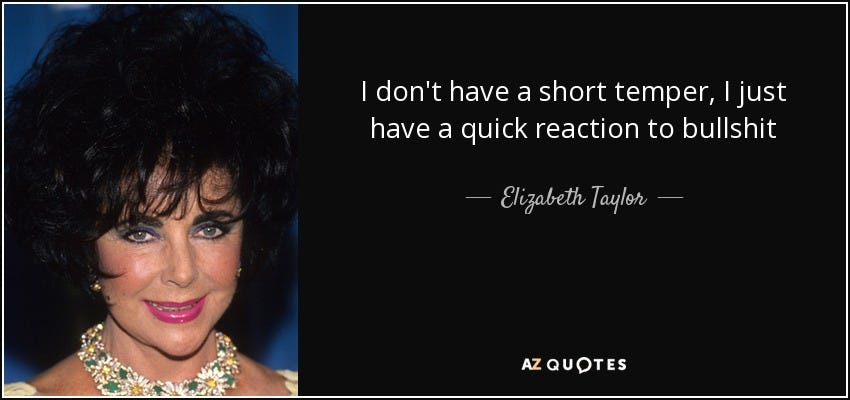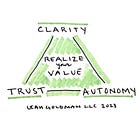Insight: Forging the Path Ahead
Strategically incorporating external data and perspectives along the journey toward our goals.
I am goal-oriented. Goals are great! They give us direction and a channel to realize our purpose. But often, the path to achieve a goal is unclear. When I set a goal, I see it as a summit, off in the distance. I’m standing at the foot of the mountain with the aspiration of making it to the top. There are many paths up the mountain. Some have been well-worn by others before me; others are rugged and raw. To get to my destination, I need to take the journey step by step, sometimes moving between trails, doubling back, or scaling a wall to follow the best path to reach my goal at the summit.
Looking back at the times when I’ve been most successful in achieving my goals, I was able to use context and information to figure out the next step. When I’m anxious, I get out of my protective shell and have a conversation. When I’m faced with a choice and unsure what to do, I talk with people and get their take on a situation. What would they do if they were in my shoes? I look for signs and signals about what might lay ahead if I choose one direction over another. Then, I connect the dots - what is this information telling me? I use this insight to help navigate the next segment of my journey.
When you have clarity about what you want, insight is a tool and a practice that can help devise a path. Insight is the synthesis of external information that we use to inform our decisions. Insight allows us to decide the next right action that leads us on the path to a goal.
We may not yet know the way but using insight helps us to figure it out. Unlike intuition, which comes from within, the source of insight is outside of ourselves. We gain our insight from information collected from the external world.
Two Sources of Insight
I consider two sources of information we gather to develop our insight:
Data: Information from experiments.
Perspectives: Information from other people.
Data: Information from Experiments
Data is evidence we obtain when we take an action and see the result. Action can be small (a first step), or large (leaving your job and starting a Substack newsletter). We act and then pause - what happened? This data can be hard, quantifiable information or it can be a sense. It can be a number in your bank account or it could be a yes or no answer from a proposal.
The Tricky Part: Be open to the data
The tricky part is collecting the data: being open, observant and ready to receive the data when it arrives. That’s not to say that every action needs a plan or a designed experiment, though some may benefit from that structured approach. All we need at first is awareness - open minds and open hearts - to be ready to receive the insight when it comes.
Sometimes the data isn’t what we expect. It might disappoint: you worked hard on the proposal but got a ‘no’ after the pitch. It might surprise: you expected a completely different result. By seeing the quantifiable outcome, we have some valuable information.
To really know what to do next, we may need to ask for some more data or context: “Why?”. Remember, you don’t have that data yet, be open to the rationale and you’ll have more information to plan your next move. It’s not personal, its a strategic advantage for next time.
Perspectives: Information from Others
When you share your plan, your vision, your dreams with someone else, how do they react? Do they ask questions that help you clarify that plan? Maybe they raise a risk or a gap that you didn’t identify.
Gaining perspective from others broadens our view and raises our vantage point. The people you share with may have knowledge about how your stakeholders think. They may be familiar with groups you don’t fully understand. Their own experience lends them a unique way of receiving and processing your ideas. They may have observed your past actions and collected their own data about situations that you may not have. Or, they might be full of shit.

The Tricky Part: Whose perspective counts?
The tricky thing with Perspective is figuring out who you should actually pay attention to. If you listen to everyone, you will run yourself in circles. One person tells you the path is to the right, another says the left… which direction do you travel?
Determining whose perspective is most valid in a given situation is the key. Your dentist will give you valid insight for brushing and flossing, but may not be the best source for how to get your book published. Your friends may be able to give advice about how to approach an important family conversation, but perhaps not how to pitch an idea to your CEO. The skill to hone is separating the signal from the noise.
One tool that can help you determine whose perspectives to listen to is the Trust Quotient, which I discussed in my last newsletter about Value.
Consider the source’s credibility in the subject you’re discussing. Do they have a past record of reliable advice? How well do they understand your values (intimacy)? Ensure they are focused on your interests (low self-orientation). If these components result in a high Trust value, you might consider incorporating their perspective.
Mindsets for Insight
When faced with data and perspective, practicing these mindsets help focus the insight and leave the noise.
Bias for action. Insights come from action, whether implementing a big plan or having an honest and open conversation. The action verbs are critical - do the thing and get insight. This also happens to be one of Amazon’s leadership principles, and what works in business can be applied to ourselves. “Many decisions and actions are reversible and do not need extensive study.”
Conduct many smaller experiments. Remember that not every action is a commitment. How might you divide a big step into small actions? Few decisions are forever, so consider how you might make a decision for the next week, month, or six months… not sixteen years. Plan to take the first small step and see where it leads. You may find more paths opening ahead.
Consider the source. Who is giving you this input? From what population was the data collected? If the source is valuable, collect the insight and use it when you take your next step down the path. If the source isn’t aligned with your intention, goodbye.
Navigating the Path
I’m currently exploring my path up the mountain with this newsletter. One of my goals is to write a book. How do I navigate this unfamiliar terrain to the mountain summit? I’ve decided to write my newsletter as a place to deposit my ideas, show my work1, and take iterative action. I’ve experimented with different types of posts and topics, which helps me channel my voice and develop my point of view.
I use each newsletter as an experiment. I collect the data such as metrics (i.e. open rate, shares, new subscribers, etc.) and perspectives from comments (under each post, on social, or IRL conversations). Each bit of input informs my intuition - how do I feel about the topic? Could I write more? And I continue to forge the path ahead, post by post.
Show Your Work is a great book by Austin Kleon where he shares the message that work is about process not product. This newsletter was inspired by his work!









Wonderful newsletter, Leah! Thank you !
There is no right or wrong in anything. There is only what is best for you at that moment in your life ! That being said, freeing yourself from what is toxic is imperative when working on reaching out goals and that can be a challenge at times 😅
Listening and understanding external input is essential for one’s growth and development. Being able to eliminate that which is a negative influence from positive support is necessary to grow towards one’s goals. Well written and thoughtful article. Looking forward to Leah’s next installment!